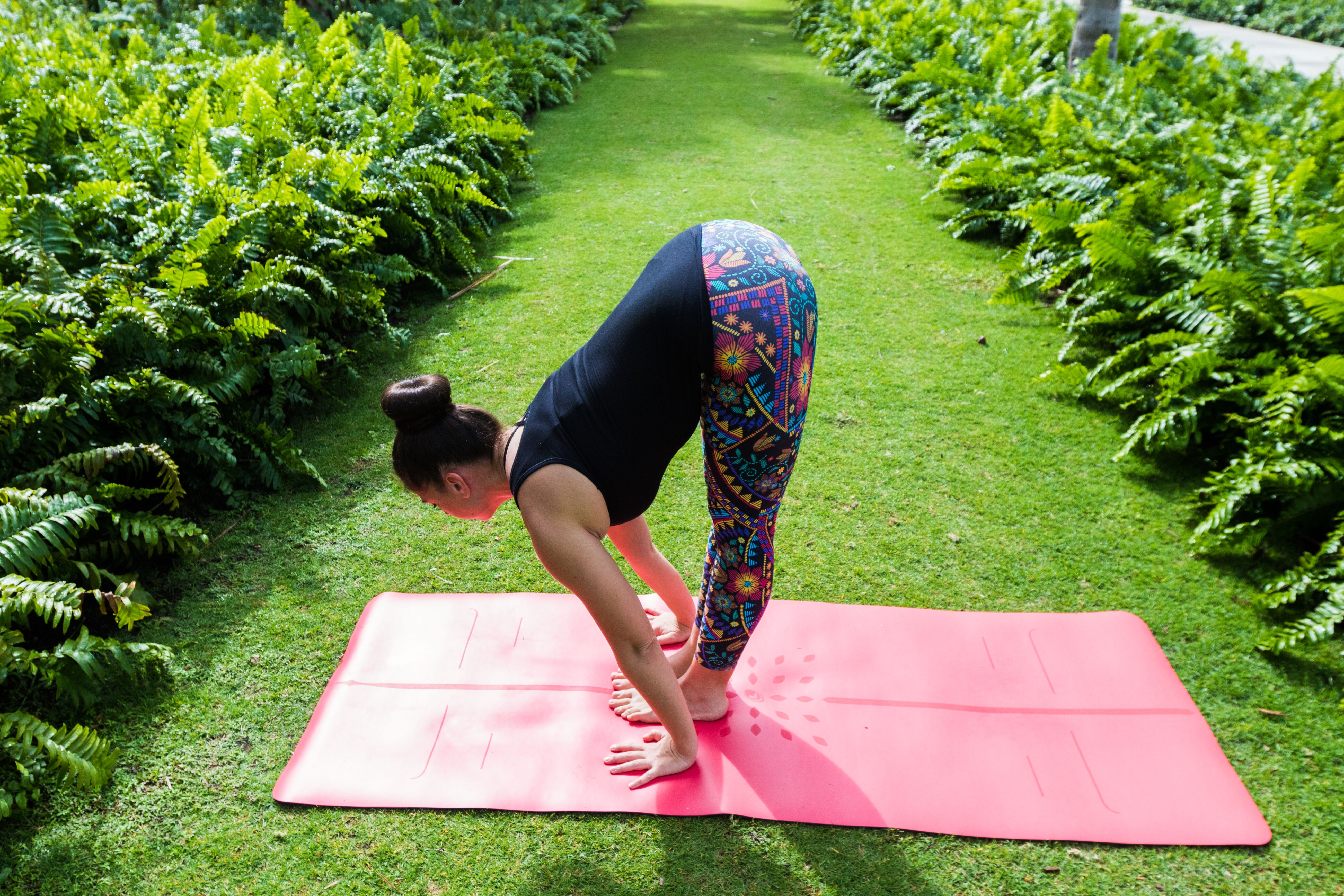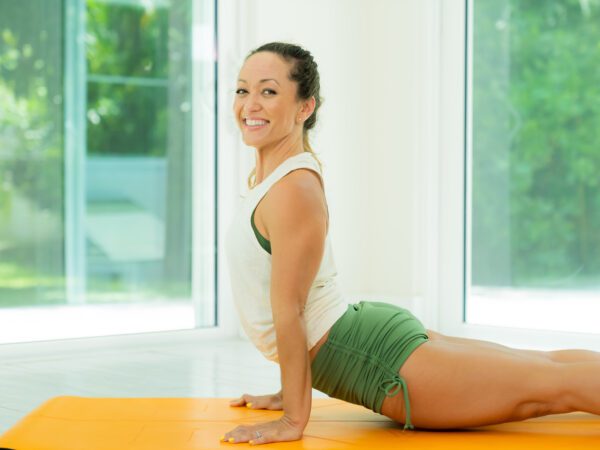I teach the Mysore method of Ashtanga Yoga. Have you heard of it? If you practice any yoga technique, you have probably heard of Ashtanga, but Mysore may be a mystery. And even if you have some knowledge of what Mysore is, the idea of taking a class may be a bit intimidating. I totally understand. It is hard to anticipate what you are in for when you think about taking your first Mysore class. However, it really is a very welcoming and inclusive form of yoga practice, even for beginners. Maybe especially for beginners. Allow me to clear up some of the haze around the mysterious Mysore Method.
First of all, let’s be clear on what Ashtanga is. Ashtanga Yoga is a vinyasa method. Vinyasa refers to the synchronizing of movement to breath. Breath is the first layer, a steady flowing of in and out, setting the pace and dynamic of your yoga practice. The body’s movement is layered over the constant rhythm of the breath. In a vinyasa method, such as Ashtanga, the postures and moments of stillness are linked by transitional movement sequences. Every breath has an assignment, either to maintain and deepen the experience within the posture or to transition from one posture to the next. In this way, the mental connection to the practice can remain unbroken. From the first inhalation to the last exhalation, the practitioner is asked to stay focused, stay engaged, stay in their yoga.

Ashtanga is a vinyasa method that has a set sequence of postures. You do the same postures in the same order every time. The sequence is progressive in that each posture is built on the information received from previous ones. There are six series of postures, each one more challenging than the last. The first is referred to as Primary Series, also Yoga Chikitsa, yoga therapy, and is intended to rehabilitate the body. The postures address the main areas of the body: the spinal column, hips, knees, and shoulders, as well as the internal organs. The intention is to assist in healing old injuries, correcting chronic patterns, and bringing the body to its most optimal neutral state. The second series referred to as the intermediate series, or Nadi Shodana, is a practice of nerve cleansing. This practice deals with purifying the energy channels of the body. The third series and beyond continue to challenge the physical body and the subtle bodies of energy, mind, emotion, and spirit in increasingly deep and intense ways. Each series can take many years to learn and fully integrate. Most practitioners find a lifetime of benefit within the primary series alone. A handful may venture into the intermediate series, and only a few work their way into the advanced series of Ashtanga Yoga.
Mysore then is the traditional self-practice approach to the Ashtanga technique. It derives its name from the city in India, Mysuru, where it developed and where the current head of the lineage continues to live and teach. In a Mysore class, each student moves independently, according to the timing of their own breath, through the sequence of postures as they have learned them from their teacher. The teacher moves through the room, giving assistance, instruction, and guidance as needed one-on-one basis. This method requires a commitment of time and effort. Frequent and consistent practice results in a deeper understanding and a greater connection to the work of yoga. It is considered to be a daily practice that includes one day of rest per week, rest on the full and new moons, and rest for women during their monthly cycles.
When a student new to the practice begins, the teacher provides a lot of attention and instruction, teaching them the beginning sequences of the practice, bit by bit. They do not need to know anything about Ashtanga to begin. They don’t even need to know anything about yoga! The instructor meets them where they are and teaches them the practice at the pace that best suits them. Every practitioner is different, and this method honors that. The teacher determines the student’s readiness to progress deeper into the challenges of the practice. As the student mentally integrates the order of postures and physically integrates the information of each pose, the teacher gives them more information; more poses, building slowly and intentionally through the series.

The nature of the method allows for a significant amount of independence for the student. They are required to memorize the order of postures and to flow through them according to that memory. They are also given the space and time to give attention to areas they struggle with. A student may do one posture two or three times to work on obstacles before continuing through the sequence or may stay a bit longer in order to explore an experience. There is opportunity for each student to do the work they need to do in order to best receive the benefit of the practice.
This method also allows for a relationship to develop between student and teacher. A good teacher of Ashtanga Mysore is assessing your progress as it projects forward into the days, weeks, months, even years to come. They are aiming to develop a program that will help you navigate the practice according to your specific strengths and weakness. Trust grows in this relationship based on an understanding and empathy from the teacher and the knowledge that the teacher has themselves gone through the same process. The student is tasked with finding their teacher, the person they connect with, can trust, and allow the overall guidance of their practice.
Ashtanga Mysore can be an incredibly transformative yoga practice. The set sequence allows for a daily checking in of progress and the fluctuations caused by…well, life. If the practice remains the same, day to day, what changes? We do. Our physical, mental, emotional, and spiritual states are subject to fluctuations. This is natural. The consistency and structure of the Ashtanga method is the framework within which we can become aware of and assess these fluctuations. As we develop an understanding of how our lives affect us, we can make choices. We can learn to respond intentionally rather than react impulsively or out of habit. The set sequence also allows for muscle memory to develop, freeing the focus of the mind to enter a more meditative state. When we no longer have to think about what pose comes next, we can fully immerse in the present, in the sensations of the posture, and the thoughts and emotions that arise. We can find and cultivate the inner witness of the present moment, the self that observes and can remain steady within the swirl of distraction. When the self can be at peace, no matter the intensity of the posture, the self can also be at peace no matter what challenges are encountered off the mat.

Angelique Sandas is a life long student of movement and the interconnectedness of mind body and spirit. It began with gymnastics and dance, initiating her love of movement, the body’s natural way of expressing ideas, emotions, and experiences. Angelique received her B.A. in dance from the University of Minnesota, graduating in 1999. It was during these years that she was first introduced to yoga. In yoga, Angelique’s relationship with movement developed new depth and meaning. Movement became a path to profound inner transformation. She was inspired to share what she was learning and felt drawn to teach. In 2003, Angelique traveled to Thailand to study with Paul Dallaghan in the Ashtanga yoga system as taught by Sri K. Pattabhi Jois and received her teaching certification. She has also studied pranayama and yogic philosophy with Sri O.P. Tiwari of the Kaivalyadhama Institute, India and received advanced anatomy and adjustment training from David Keil. Until 2007, Angelique taught and practiced in Chicago. She then moved to Miami Beach where she worked closely in the Ashtanga method with her teacher and mentor Kino MacGregor as well as Tim Feldmann and Greg Nardi at Miami Life Center. Angelique ran the Mysore program at Shanti Yoga Shala in Philadelphia, PA in 2012 – 2013 and Delray Yoga Shala in Delray Beach, FL. 2014 – 2016. Currently, Angelique runs a Mysore program Ashtanga Yoga Palm Beach at Yoga Path Palm Beach in West Palm Beach, FL. During her 2011 visit to study in Mysore, India, Angelique received Authorization to teach Ashtanga Yoga. She remains a dedicated instructor and a devoted student of yoga, growing into the potential of the spirit through it’s physical expression.









